Text
reading about Goujon is such a rewarding experience, just last night i opened a biography of his to a random page and learnt he helped a wounded soldier on a battlefield by giving up his horse for him to ride. he then declined public praise from people who had seen this happen and he himself never talked about it
31 notes
·
View notes
Text
edging my vampire boyfriend by not giving him permission to come inside
968 notes
·
View notes
Note
How many political parties were there during the revolution?
Because duo to the popularity (I mean by popularity "the most influential" like "Jacobin" and "Girondins" etc. ) I start to forgot that was there more political parties so could you tell us about them and their most notable achievements ?
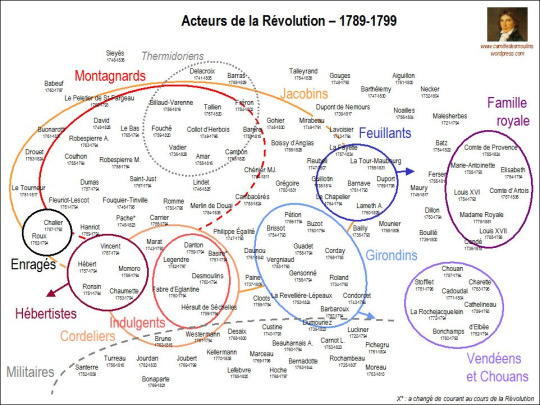
It is hard to really talk about political parties when it comes to the French Revolution, at least not in the way in which we today think of the term, with worked out ideologies and party programs for each and everyone. Furthermore, some of these ”parties” are not like the others. Jacobin, Cordelier and Feuillant all refer to people belonging to a certain political club, paying money for their membership, whereas girondins, montagnards, thermidorians, enragés, hébertists (and robespirreists that are not mentioned in the chart) all are loose compounds of people that pushed for (or were at least said to push for) the same political changes, and often were personal friends as well. The vagueness of all of this has lead to debates not only regarding what each group really stood for, but even who really belonged to them. My understanding of these groups is honestly not much deeper than what can be read on wikipedia (each group already has its own page) but to shortly summarize:
Jacobins — members of the Jacobin Club (Society of the Friends of the Constitution) which was founded in 1789 and shut down in November of 1794. It’s main quarter was on rue Saint-Honoré in Paris, but unlike the Cordeliers and Feuillants, it also set up sister clubs out in the provinces. This makes the Jacobins the biggest political group throughout the revolution in terms of official members. When it comes to ideology, the club’s first set of official reglutions, passed on February 8 1790, stated that ”the object of the Society of Friends of the Constitution is: 1, to discuss in advance the questions which must be decided in the National Assembly; 2, to work towards the re-establishment and strengthening of the constitution according to the spirit of the preamble above; 3, to correspond with other Societies of the same type which may be formed in the kingdom” as well as that ”loyalty to the constitution, dedication to defending it, respect and submission to the powers it has established, will be the first laws imposed on those who wish to be admitted to these Societies.” However, as the revolution radicalized, so did the Jacobin club.
Cordeliers — members of the Cordelier Club (also known as the Society of the Friends of the Rights of Man and of the Citizen) which existed from 1790 to 1795. Its head quarter was in the Cordeliers Convent (hence the name) in Paris, located on 15 rue de l'École de Médecine. The Cordeliers had lower fees in comparison to the Jacobins, and as a result, counted more working class men and women among its members. Its leaders were however still middle class. The Cordeliers are traditionally described as more radical than the Jacobins.
Feuillant — member of the Feuillants Club (Society of the Friends of the Constitution), founded on July 16 1791. The group held meetings in a former monastery of the Feuillant monks on Rue Saint-Honoré in Paris, hence the name. The club was for upholding the Constitution of 1791, which designated France as a constitutional monarchy.
Girondins (also sometimes known as Brissotins or Rolandins) — political group which existed within the Legislative Assembly and then National Convention, in particular the 29 deputies ordered arrested by said Convention on June 2 1793. Of these, 20 would be guillotined in Paris on October 31 the same year, while many others fled to be executed or commit suicide in order to prevent it across the following months. The name ”girondin” stem from the fact many of the groups alleged members originated from the department of Gironde. In the article The "Girondins" Were Girondins, after All (1988) Frederick A. de Luna concludes that the earliest labeling of girondins as girondins stem from April 1792, after which they grew to be frequently used by their enemies. The girondins themselves did however never use the name, and in the pamphlet J. P. Brissot, député à la Convention nationale, à tous les républicains de France ; sur la société des Jacobins de Paris (October 1792) Brissot even exclaimed ”Will the slanderers now remain silent? Will they stop pretending to believe and wanting to make believe in a faction of Gironde or of Brissot?” The girondins have traditionally been associated with 1, waging a pro-war campaign within the Legislative Assembly and the Jacobin club from December 1791 to April 1792 (as can be seen above, the first recorded labeling of girondins as girondins is from the same month said war was declared), pushing for a more liberal economy as well as seeking more ”moderate/less violent” solutions compared to the Mountain during the time of the Convention. However, there’s no actual safe connections between these goals and all the men tradionally described as girondins for as far as I’m aware. To give the word to Terror: the French Revolution and its Demons (2022) by Michel Biard and Marisa Linton:
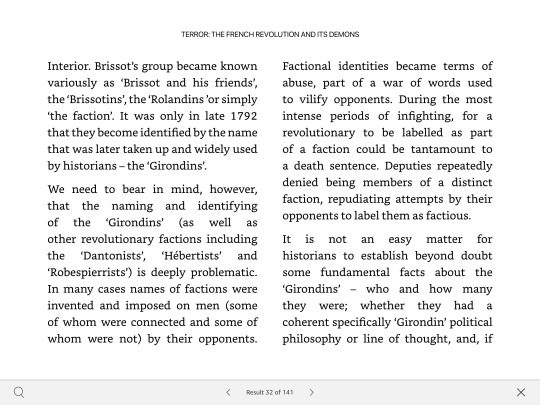
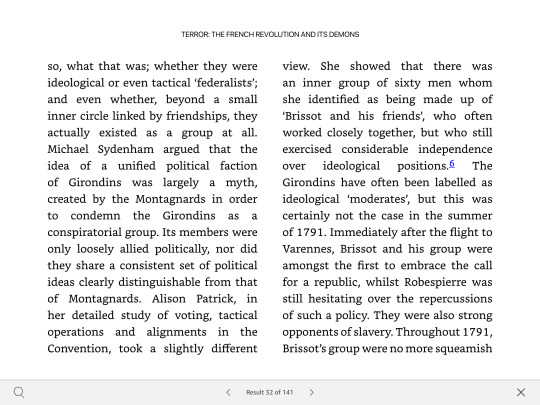
Montagnards — member of the Mountain, a group within the Legislative Assembly and then especially the National Convention, so dubbed because its members occupied the highest benches of the hall of the assembly. I honestly don’t really know what defines this ”party” more than being opponents of the girondins. So while the latter are associated with being pro-war, for a more liberal economy and reluctant to ”violent/exceptional measures”, the Montagnards are instead described as anti-war, for a more planned economy and welcoming of more ”violent/exceptional measures.” However, like in the case with the girondins, were we to line up every person tradionally described as a montagnard and check up his stance on each of these three topics, I’m unsure if we would actually get a very unified result.
Unlike in the case of the girondins, indulgents and exagères, we have proof of the montagnards describing themselves as just that. Here is Robespierre, who might as well be called the leader/heart of the ”party,” defining what a montagnard is on June 12 1794. More than anything, it may however rather illustrate how this wasn’t a properly defined group either, as I’m sure the members of every other ”party” discussed here would be willing to describe themselves in the exact same way:
Yes, Montagnards, you will always be the boulevard of public liberty; but you have nothing in common with intriguers and perverts, whoever they may be. If they try to deceive you, if they claim to identify with you, they are no less foreign to your principles. The Mountain is nothing other than the heights of patriotism; a Montagnard is nothing other than a pure, reasonable and sublime patriot.
The fall of Robespierre marks the beginning of the end for the Mountain, many of who’s members would be expulsed, executed and exiled during the thermidorian convention.
Thermidorians — the name has its origin in the journée of 9 thermidor (July 27 1794), the day Robespierre and his allies fell from power, but it is not fully clear if it is active participation in/support of said journée, or holding power during the period that followed it, which is distinguished by its step back, for better or worse, from the more ”revolutionary measures” taken during 1793-1794 that makes someone a thermidorian. In the article ”Robbers, Muddlers, Bastards, and Bankrupts?” A Collective Look at the Thermidorians (2019) Mette Harder writes that this too is a very poorly defined group — ”Beyond their individual names, there is, however, no clear sense of who the Thermidorians were collectively, how cohesive a group they became, and what exactly they hoped to achieve while in power. Their name itself adds to this uncertainty, as it is used interchangeably to describe a specific group of reactionaries and the entire Convention post-thermidor.”
Indulgents (also sometimes known as dantonists) — group associated around Convention deputy Georges-Jacques Danton, and in particular those executed alongside him on April 5 1794. Traditionally described as driving a campaign that was about softening ”the terror” as well as pushing back from dechristianization from late 1793 up until their execution. This idea is however something that has been heavily contested in more recent years, some historians concluding the Indulgents never were a coherent group with a common goal to begin with but that this was rather something contructed by their enemies in time for their trial (see for example chapter 8 — Le chef d’un groupe indulgent ? — of Danton: le mythe et l’histoire (2016) or Camille et Lucile Desmoulins: un rêve de république (2018).
Hébertists (also known as exagères) — group associated around the journalist Jacques René Hébert, and in particular those that were executed alongside him on March 24 1794. Drove a campaign for a hardening of ”the terror” and dechristianization from late 1793 up until the execution. Like with the indulgents, it’s however hard for me to say if the members themselves identified themselves as a group or if this is a post-construction.
Enragés — just read this. I honestly had trouble finding much more.
95 notes
·
View notes
Text

the get me out of here mood
184 notes
·
View notes
Text

he's talking to u
158 notes
·
View notes
Text
POV: The year's 1787 and the intendants of the royal Garde-Meuble have invited you to dinner
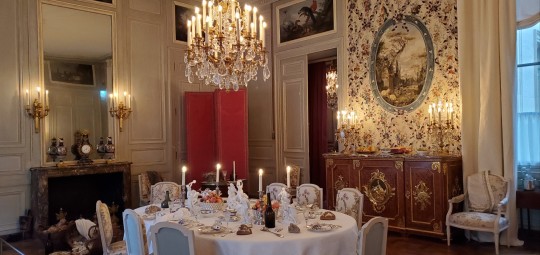





44 notes
·
View notes
Text
Anyway, who wants to see a 18C fuck room? Could be a nice palate cleanser after the Directoire mushroom hat.
183 notes
·
View notes
Text
A little piece of music which I’d like to share with everyone who’s interested. It’s a piano music sheet of Henry Litolff’s «Ouverture to Maximilian Robespierre» which is basically one of my favorite compositions ever. It came to me by pure coincidence so I really proud to have it in my collection. The reprint is Russian and dates back to 1928. The first page is a bit damaged but the rest is almost perfectly fine.
Especially I like the La Marseillaise fragment here. Also it’s for four hands so I have literally no one to play it with lol.
If you never listened to this ouverture I highly recommend.
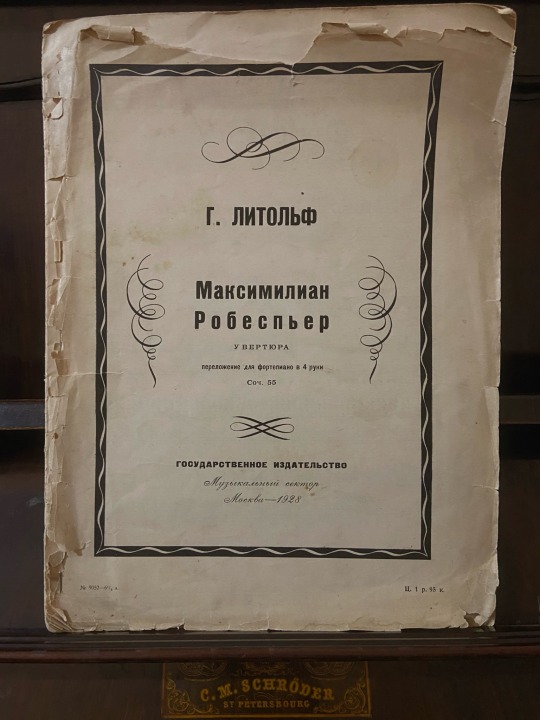

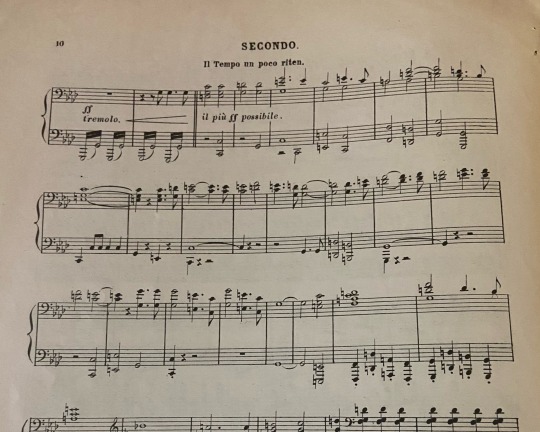
Bonus: a postcard with Maxime from the movie «Napoléon» 1927. The music sheet was released a year after the movie was made.
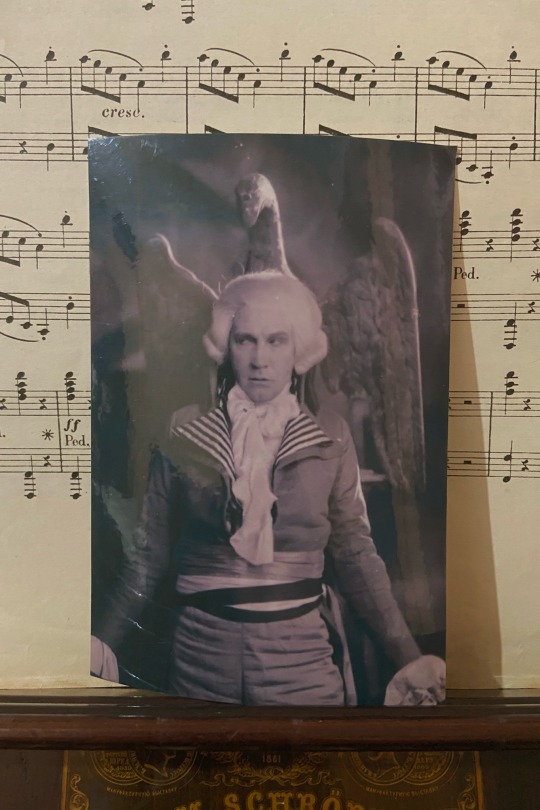
177 notes
·
View notes
Text

Cover of the October 1895 issue of "Liberty", an English anarchist journal featuring works from anarcho-feminists Louise Michel and Emma Goldman and other prominent anarchists.
Read it here.
36 notes
·
View notes
Note
In medias it's always mentioned that Saint-Just said his famous quote ("I despise the dust that forms me...") right before his death, but I was wondering if it's true or just a legend. I'm asking because I read somewhere here on Tumblr that he wrote that quote down in his notes not that he actually said that in front of the crowd, which has always seemed strange to me anyway since I don't think he was allowed to speak on the scaffold (?)
I am so sorry for my late reply, anon!
He wrote this in the preamble to his "Fragments sur les institutions républicaines" (not completed nor published during his life). It was written in late 1793/early 1794.
Here is the book: Fragments sur les institutions républicaines
“Je méprise la poussière qui me compose et qui vous parle ; on pourra la persécuter et faire mourir cette poussière ! Mais je défie qu’on m’arrache cette vie indépendante que je me suis donnée dans les siècles et dans les cieux… “
I don't think he ever said any of this out loud, as part of a speech, and definitely not on the scaffold. Still, because the quote is poignant, it is often used as his "last words" in a way.
47 notes
·
View notes
Text
Funny how on the wallpaper of the CSP meeting room there's printed the quote "if we are united, we will be invincibles"... and yet all they did was fight against each other >.>
50 notes
·
View notes
Photo

Whenever I go somewhere of historical significance
11K notes
·
View notes
Text
modern coffee shop au: cute underpaid baristas, awkward first impressions, meet-the-cute scenarios in mundane settings, hot beverages, fluff
18th century coffe shop au: newspapers and political pamphlets, social unrest, everyone is a free mason, Jean-Jacques Rousseau is discussed extensively
31K notes
·
View notes
Text
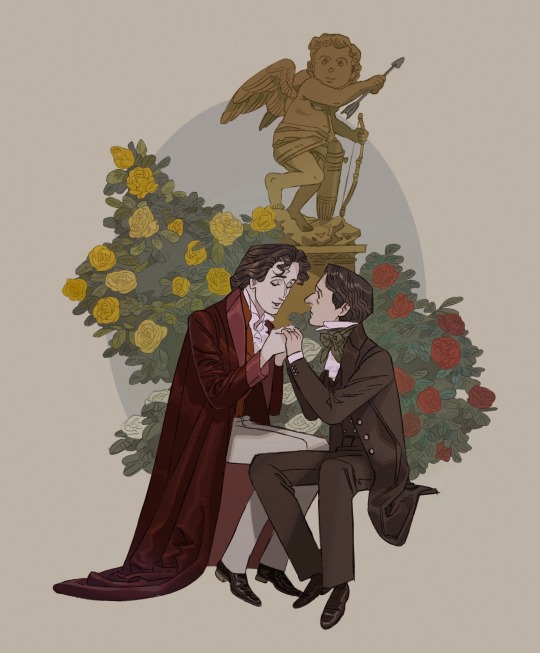

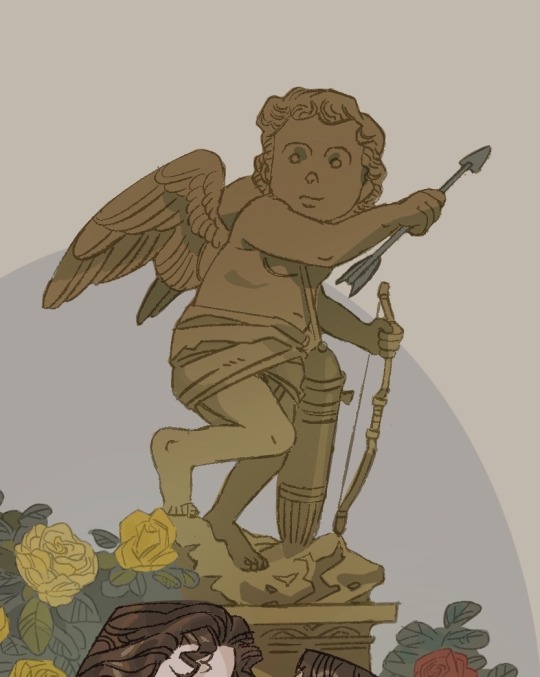
You and I are friends, Basil, and we must always remain so.
-
A bit of friendzoning for a late Valentines!
It’s amazing to see how the relationship between Dorian and Basil changes through dialogue selection; this line (if I remember correctly and under comprehensible reasons) did not make into the film, so I took some liberty in mixing things up and made a little offering to all the artists that gave me brainrot.
1K notes
·
View notes
Text
By the way, if any of you, like me, are nerds who love maps, I highly recommend checking out the Turgot map. I won't link it or tumblr will eat this post, but you can find it just by searching Wikipedia - it's an incredibly detailed 3D map of Paris made in the 1730s, and by "incredibly detailed," I mean
incredibly
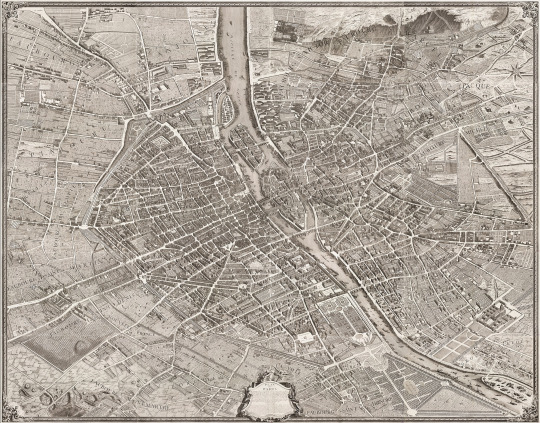
incredibly

INCREDIBLY
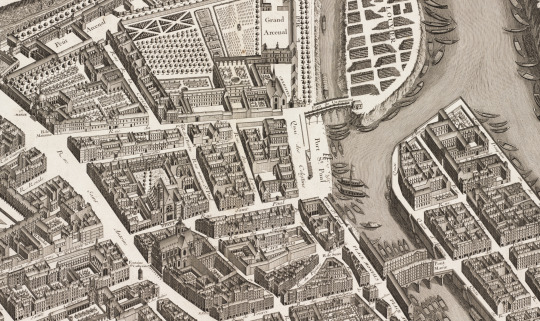
DETAILED!

Look, there's Notre Dame! Individual trees! Individual lampposts! Individual boats!! (Some of them even have little people in lol, though clearly not to scale)
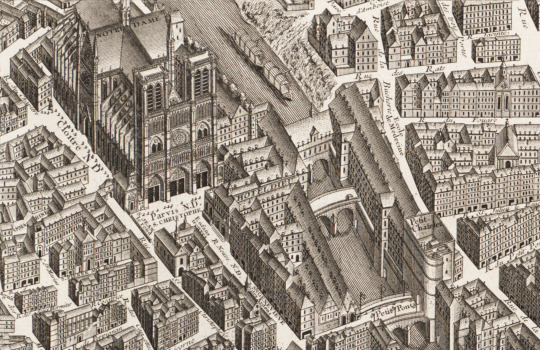
The full scan is over 35,000 pixels wide, guys! That's over 10 feet of map!! All drawn and engraved by hand! I'm freaking out a little! What an absolutely amazing piece of history & art!
16K notes
·
View notes
